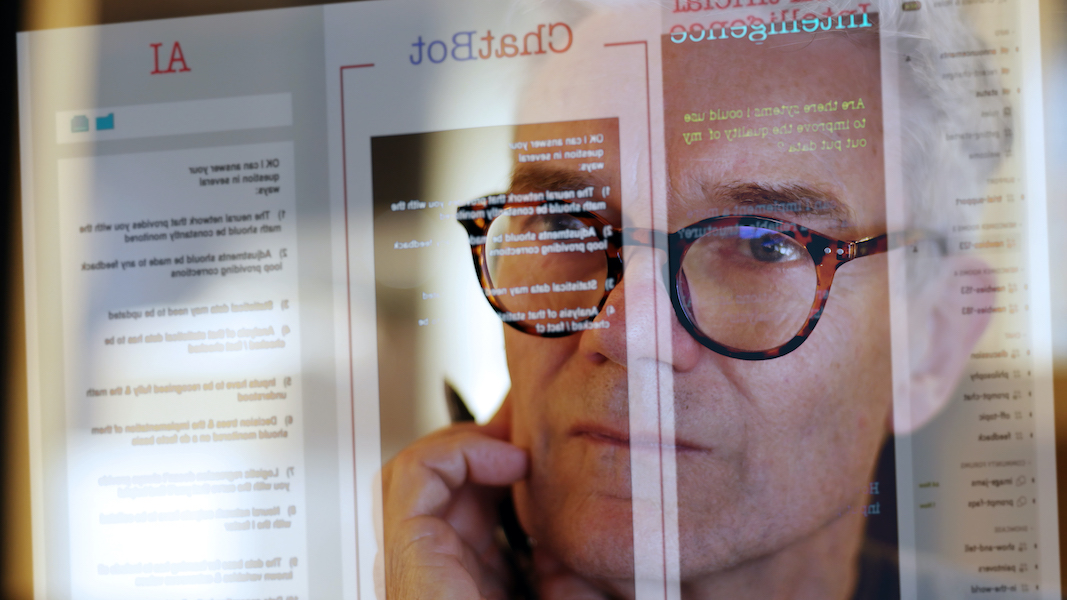The Power and Purpose of AI in Media Relations
By Marie Renckens
September 2023
The world of media relations is ever evolving. The recent rise in generative AI — capable of generating text, images or other media in response to prompts — offers a new tool with the potential to enhance our pitching capabilities and media relations success.
However, this technology should be used strategically and cautiously.
AI tools can be useful for research, ideation and content creation and they must be used responsibly, especially as the technology is in the early stages of testing and widespread adoption.
Communication leaders recently surveyed by USC Annenberg Center for Public Relations overwhelmingly saw the importance of AI to the future of public relations and the communications industry.
There is still a lot to learn about the power of the tool. We are at the very beginning of this massive technological disruption. In the same USC study, only 16% of communication leaders admit they are extremely knowledgeable about applications of AI in their work. Outlining specific best practices can help guide accurate, compliant and ethical use of generative AI tools within organizations to achieve the highest value outcomes.
A few ways communicators can use AI in media relations include research ideation, initial content generation and idea creation. Because generative AI tools do not produce consistently reliable, accurate and current information — nor the highest quality, human-centric content — we recommend a few best practices listed below to ensure that you are using the tools in the most responsible, efficient way.
Effectively and strategically use prompts.
Using generative AI prompts to generate ideas can be an inspiring first step. You can kick off the brainstorming process by defining the topic or theme you want to explore, such as a media pitch or news story.
Then, craft open-ended and thought-provoking prompts that encourage the AI to generate unique and engaging responses. For example, you can ask generative AI to provide three story ideas for a specific industry media pitch.
Experiment with different prompts by adjusting the length and complexity to see how the AI interprets them. Allow the AI’s imaginative output to surprise you and spark new ideas.
If you encounter a particularly intriguing response, then consider branching off from that point to explore further. For example, if you’re interested in one of the story ideas generative AI provided, then you can ask it to then outline the pitch in more detail.
Make sure to use multiple iterations and prompts to test the AI’s consistency and how it responds to various input styles. Remember generative AI is a valuable tool to augment your creativity, but it’s essential to refine and develop the AI-generated ideas by adding your personal touch and expertise to create compelling, original and accurate written content.
Look for patterns and inconsistencies.
It is crucial to implement a thorough review process to check for patterns, inconsistencies and potential human errors when employing generative AI for all writing, but especially media relations.
PR professionals can harness the power of generative AI by diligently monitoring and validating the output. This can also minimize potential issues or inaccuracies and ultimately lead to more accurate, reliable and high-quality stories.
To thoroughly and accurately review AI-generated media relations content, first scrutinize the draft for recurring phrases or ideas that might indicate it was generated by a machine, such as repeating the same phrase multiple times or repeatedly using the same sentence structure.
AI-generated content may contain errors or inconsistencies that would not be present in human-generated content, such as awkward phrasing, inappropriate social and emotional phrasing, and bias. It’s important to catch these errors and humanize the work before pitching the content to remain a strong partner for the media and provide accurate and consistent content.
It is also essential to look for logical inconsistencies or contradictory statements that could arise from the limitations of the AI model. For example, AI-generated content may be presented out of context or not make sense in context.
Human error might also inadvertently creep in during the training process of the tool, which may lead to biased or inaccurate responses. To mitigate this, review the generated media relations content with a critical eye by fact-checking against reliable sources.
Check the facts.
When utilizing generative AI, such as ChatGPT, for fact-checking during the media relations process, approach it as a supplementary tool rather than as a definitive source. The output from these sources is not always 100% accurate and can cause discrepancies in reporting, which can cause factually incorrect media pitches that could lead to false stories.
To begin, familiarize yourself with the topic and gather information from reputable sources independently. Once you have a pitch, news release or byline draft, use generative AI to cross-reference specific claims or statements.
We recommend phrasing your fact-checking queries precisely, asking for evidence, sources or verifiable data. It is not fair to assume that the media will fact check your content or replace false data with accurate information.
Remember responses from generative AI are based on the data it was trained on and may not always be up to date or accurate. Double-check any information provided by generative AI against dependable, current sources to confirm the accuracy and credibility of your content.
Combining human judgment and AI assistance in this manner can enhance the fact-checking process and help create more reliable, well-informed written material to support the content development on behalf of the editor or reporter.
AI should never be used as a singular source. Supplementing initial findings with additional research is critical to guaranteeing accuracy. The Poynter Institute recommends always asking: Who or what agenda could be behind the information? What is the evidence? Can the information be validated by other reliable sources?
The adoption of generative AI tools offers exciting possibilities for enhancing media relations, public relations and communications. And we must continue to use this technology with caution as the early-stage development and potential limitations demand responsible use.
Implementing best practices and using generative AI as an effective jumping-off point — but not the sole creator — is crucial for accurate, compliant and ethical use of the tool. When used in this way, AI presents an exciting opportunity for the world of media relations.



